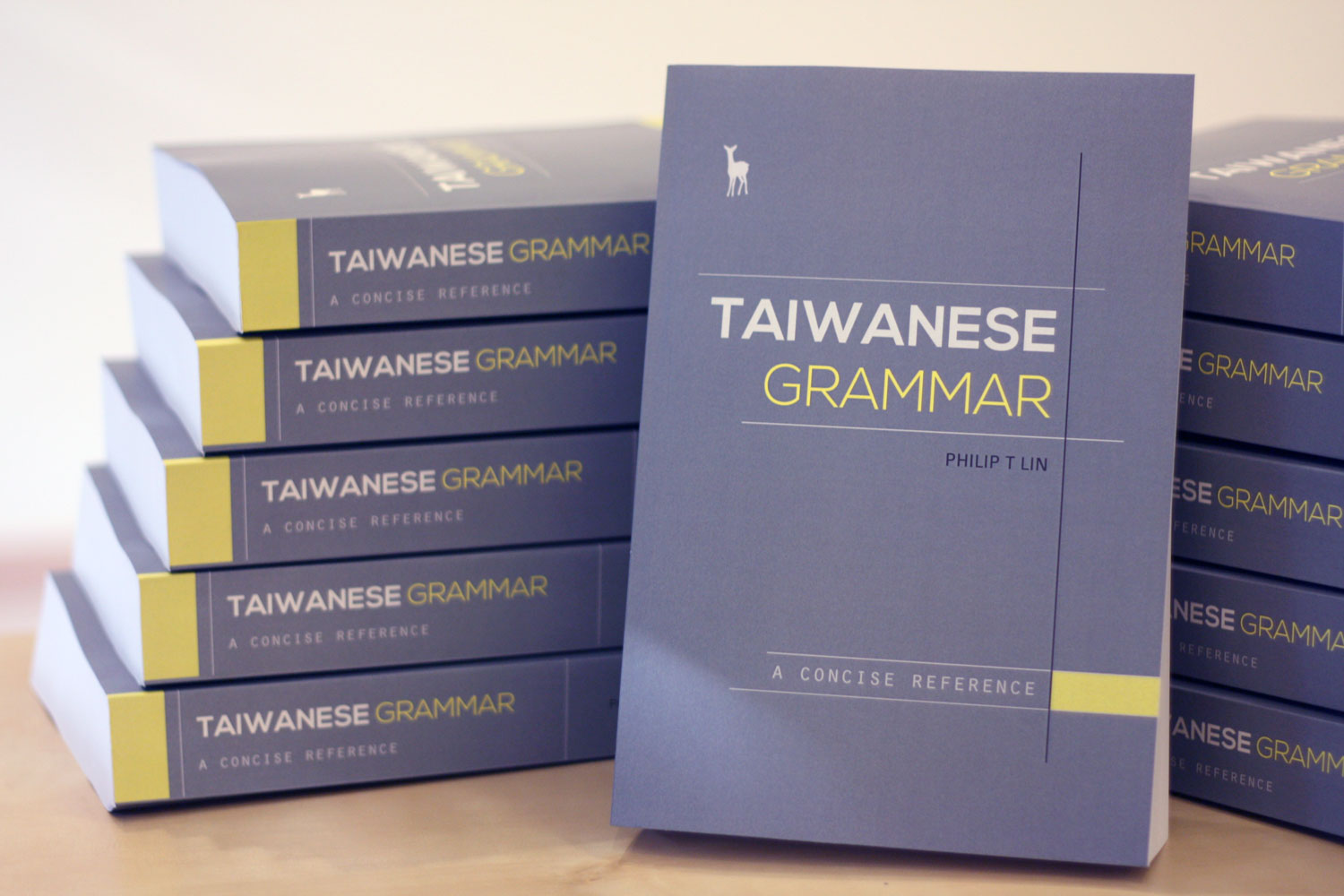At some point back in the mists of time (2009ish), when I was actively learning Taiwanese, my most frequently repeated complaint was the lack of a decent Taiwanese reference grammar (in any language). This lack has now been comprehensively remedied by the release of Philip T. Lin’s Taiwanese Grammar: A Concise Reference (Greenhorn Media, 2015).
Taiwanese is a Chinese language of the Minnan family, and has a similar degree of relatedness to Mandarin as French does to Spanish. It is sometimes called Hokkien outside Taiwan and Hoklo or Taiwanese Minnan inside the country. While Taiwanese and related dialects like Penang Hokkien and Xiamen Hokkien are spoken by tens of millions of people, there is a distinct lack of materials in English for students of the language, something which Lin, alongside others, is helping to improve.
While the meat of the book is the grammar, the introduction is worth the price of entry alone – it features a clear, concise and informative introduction to the Taiwanese language that is simply the best I have seen. A sample:
Like most Chinese languages, Taiwanese has both literary and colloquial readings for characters. Literary readings arose from the Middle Chinese pronunciation of words used in formal settings during the Tang Dynasty (AD 618-907). These newer pronunciations allowed officials from all regions of China to more easily understand each other when conducting official business in the capital city of Chang’an (Xi’an). As a result, the contemporary reader will find that the Taiwanese in the literary register bears a closer resemblance phonetically to Mandarin. For Taiwanese and other Min languages, colloquial readings are older pronunciations originating from Old Chinese during the Qin-Han Dynasties (221 BC – AD 220) and the time of the Northern and Southern Dynasties (AD 420-550).
Once we get past the introduction and the phonological description of Taiwanese (also excellent) the rest of the book is divided into lexical categories such as “indirect objects”, “habitual actions in the present” and “indicating the future with desire modal verbs”. Each section is copiously illustrated with examples in Taiwanese (both in characters and Pe̍h-ōe-jī, a common Taiwanese romanisation), Mandarin (characters and pinyin), and English, something which points up another strong suit of the book – the references to Mandarin. Most learners of Taiwanese will already have some level of proficiency in Mandarin, and Lin uses this to illuminate the way Taiwanese works (which is unsurprisingly more similar to Mandarin than to English). An example from the section titled “To Transform”:
The terms 改變 kái-piàn and 轉變 chóan-piàn generally refer to a more substantial change that ‘transforms’ or ‘alters’ the entirety of the subject into something significantly different.
改變 KÁI-PIÀN
你 的 文章 己經 改變 真 濟。
Lí ê bûn-chiong í-keng kái-piàn chin chē.
你 的 文章 已經 改變 很 多。
Nǐ de wénzhāng yǐjīng gǎibiàn hěnduō.
Your essay has already changed a lot.轉變 CHÓAN-PIÀN
對 長背 來 講, 社會 最近 轉變 傷 濟。
Tùi tióng-pòe lâi kóng, siā-hōe chòe-kīn chóan-piàn siuⁿ chē.
對 長輩 來 說, 社會 最近 改變 太 多。
Duì zhǎngbèi lái shuō, shèhuì zuìjìn gǎibiàn tài duō.
For the older generations, society has changed too much recently.”
The word parsing in the Chinese characters (both Taiwanese and Mandarin) is a good idea, and very helpful for students. Normally Chinese characters are written without spaces, meaning the reader has to parse word boundaries while they are reading (the average length of a Mandarin word is two characters). Lin has chosen to insert spaces, like in English, to make the meaning clearer. The level of detail is just right – enough to clearly understand the point of grammar under discussion without getting bogged down in technical discussions that would distract from the core purpose of a reference guide.
The coverage of the subject is excellent. In the many months that it has sat on my shelf as a reference I have never failed to find the particular point of grammar I was looking for. While I lack enough competence in the language to declare the book “comprehensive”, it certainly appears that way from the perspective of an intermediate second-language speaker like myself. In reviews as positive as this it’s common practice for the writer to look for a gripe or complaint, no matter how minor, to provide some balance to the otherwise fulsome praise. In the case of this book, such a hunt for flaws would be artificial.
Both e-book and paperback are beautifully formatted and produced. Taiwanese Grammar is a first-rate work of scholarship. I commend Philip T. Lin and Greenhorn Media for producing a book that should be an essential purchase for any serious student of Taiwanese.
Thank you to Greenhorn Media, who supplied a review copy (in both paperback and e-book).

